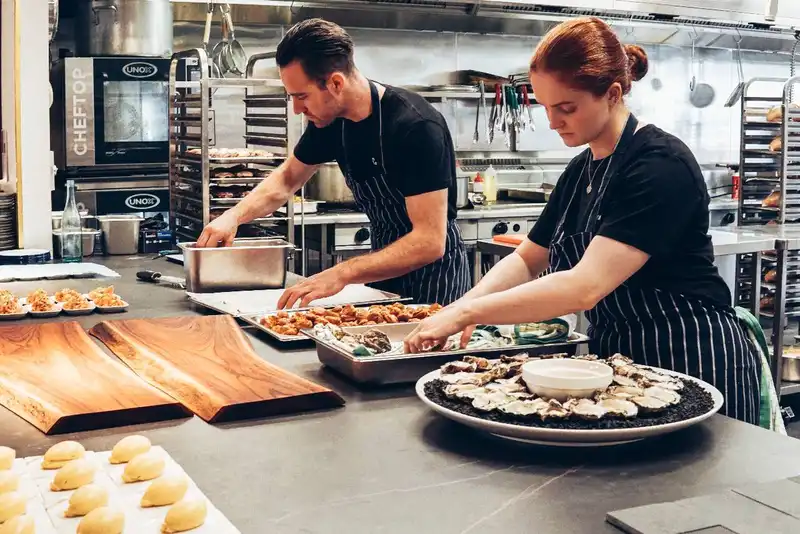Restaurant Inventory Management - Methods, Tips, and More
Restaurant owners can have better control over their operations and profit margins with the implementation of inventory management. With well-defined inventory practices and protocols, restaurateurs will have clear insight into their food costs and waste.
In order to properly manage stock, owners need to be familiar with key terminology and integrate proven strategies into their inventory systems.
What is Restaurant Inventory Management?

Restaurant inventory management is the process of monitoring the number of ingredients that were ordered, how much of it was used to serve diners, and what is leftover. Managers must keep track of these exact numbers to fully understand their spending and supplies.
When controlling inventory, restaurant owners should also take into account their losses, such as human error, customer complaints, staff meals, and spoilage. These factors can impact a business's inventory and profits.
For example, if a customer does not like their meal, the eatery will typically offer a refund or create a new and free dish for the diner.
By documenting specifically how much of which inventory is used, as well as which ones are unused, restaurants will be able to calculate their revenue for a given period.
4 Key Terms For Restaurant Inventory Management
Restaurant managers can better understand their inventory by becoming familiar with these key terms.
1. Sitting Inventory - The quantity or dollar value of products a restaurant has in-house. To effectively track inventory, managers should stick to one unit of measure.
2. Depletion - The amount or dollar value of inventory that is used in a set time frame, such as weekly, monthly, or daily.
3. Usage - The physical amount or dollar worth of sitting inventory divided by the average depletion in a given period.
4. Variance - The difference between an inventory item's cost and the usage amount cost. For example, if a restaurant has $500 worth of steak and by the end of the day they sold $450 worth of steak, the variance would be $50. This means there is $50 worth of steak that is unaccounted for.
How to Perform Restaurant Inventory
Restaurants that want to improve their inventory system or implement an entirely new process can choose from 2 main methods.
Automated Management

Food service businesses can accurately and efficiently manage their inventory by using inventory management software. Many modern platforms have ordering features that allow users to track inventory and ensure purchase orders are accurate. With this capability, restaurants can maintain optimal inventory levels.
The software also simplifies the process of tracking spending by giving users access to information regarding their historical purchase orders, suppliers, and how many new orders have been placed. It also enables restaurant owners to set budgets, which helps prevent over-ordering.
Par Inventory Sheet
A par sheet is a list that indicates the minimum level of each inventory item a business needs on hand. When restaurant owners need to replenish their inventory, they refer to the par sheet and sitting inventory to see which products they need to order and how much.
It is also helpful to consider how fast certain items are used or sold, and whether there are upcoming holidays or events that may require extra inventory.
3 Quick Tips For Restaurant Inventory Management
Restaurants can also implement various best practices to ensure that inventory is controlled correctly and that staff members are following the right procedures.
By following these tips, businesses will have an effective inventory management system.
1. Have Comprehensive Staff Training

Typically, managers and leaders of each shift will conduct detailed inventory counts. However, back of house staff and cooks should also be trained on how to track inventory and food waste because they actively work with the supplies and ingredients.
Staff should be trained on how to make note of spillage, order errors, and spoilage. If a restaurant has inventory software, staff should be taught how to properly use each feature.
2. Keep Track of Daily Sales
By regularly checking sales every day after hours of operation, restaurant owners will be able to see their customers' demands and make timely adjustments to their inventory levels.
For example, if sales indicate that a majority of diners are coming in for the restaurant's chicken special and the levels of chicken in inventory is decreasing quickly, managers can make prompt purchase orders to ensure they have a new batch for the next day to satisfy demand.
Tracking and analyzing sales data is simplified with cloud-based inventory management software because these systems have data reporting features. This makes it easier for restaurant owners to access accurate metrics and visualize their daily performance.
3. Have Safety Stock Available

Having additional quantities of inventory on hand will enable restaurants to deal with emergencies, such as delays in supplier delivery, weather changes, or accidental loss of inventory.
It is recommended that eateries have safety stock for inventory items that sell out quickly. Therefore, when consumer demands increase unexpectedly, they will have enough inventory to satisfy customer orders.
By equipping restaurants with effective inventory management, operations can run smoothly and profitably.





